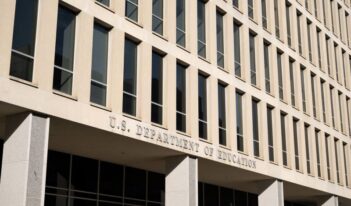
Despite the breadth of the Department of Educations’s debt-cancellation powers, it has failed to employ its powers to their fullest extent.
Something has to give on student loans. The $1.4 trillion in outstanding student loan debt has weakened the macroeconomy and has become a form of regressive taxation. In the process, an increasing number of individuals have had to defer starting a family, accept jobs that they do not want, and endure the significant psychological and physical burdens of heavy indebtedness.
Although there has been plenty of discussion surrounding these issues, with a specific focus on student loan interest rates and income-based repayment plans, little has been said about the U.S. Department of Education’s broad powers to outright cancel existing student loans. This series of four essays will discuss the most important of those powers, and why the Department’s authority has not been frequently discussed—much less invoked by the agency.
These issues will be examined through the lens of for-profit college students’ demands that the Department cancel their debts under a law mandating discharges in the case of school fraud. The essays in this series will reveal that despite the breadth of the Department’s debt-cancellation powers to discharge these debts, the Department has failed to employ its powers to their fullest extent—to the detriment of the many students who had been defrauded by their former institutions.
This is a problem, as the essays will explore, that largely stems from the fact that the Department views maximizing collection as its primary responsibility with respect to student debt. Accordingly, the Department has relied on questionable arguments about the limits of the Department’s powers, while pointing the finger at a dysfunctional Congress instead of acknowledging its responsibility to students—enabling the Obama Administration to maintain its image of cracking down on these for-profit schools and protecting defrauded students, while still fulfilling its budgetary prerogative.
After analyzing this saga, this series concludes by addressing the Department’s broadest power: its discretionary compromise and settlement authority, which, if fully invoked—as it should be—could be used to discharge all outstanding student loans under the right political circumstances. The tremendous potential of this authority can only be implemented, however, if we reconsider the obligations of education officials to student debtors and vice versa.
Student Loans Should Not Fund the Department of Education
January 4, 2017 | Luke Herrine
To date, Education Department officials have used even their less expansive debt-cancellation powers only in limited circumstances—and when pushed, they have actively fought to limit them. Perhaps the Department’s own efforts to obscure its debt cancellation powers explain why policymakers have not focused more on this potential solution.
Even for Defrauded Students, Debt Relief is Rarely Granted
January 5, 2017 | Luke Herrine
Nearly all of the Department’s decisions to grant or deny discharges have concerned students who attended for-profit colleges, like the now-defunct Corinthian Colleges. Yet, as of this writing, the Department has canceled just 6 percent of the debt of former Corinthian students, perhaps to keep the floodgates from opening.
The Dark Side of Departmental Discretion
January 5, 2017 | Luke Herrine
New Department of Education regulations allow for automatic cancellation of the debts of students of such institutions, rather than forcing each student to plead a case individually. Unfortunately, however, what the Education Department seems to grant in the headlines of the new rules, it takes away in the fine print.
The Future of the Department of Education’s Power to Cancel Student Loan Debt
January 6, 2017 | Luke Herrine
Currently, the Department only seems to use its compromise power in a very narrow set of cases, as an absolute last resort for chronically defaulted borrowers who present minimal prospect of repayment rehabilitation. In the Democratic party, there are signs that the zeitgeist may be shifting; the future of the Republican party, with Donald Trump at its head, is less certain.



